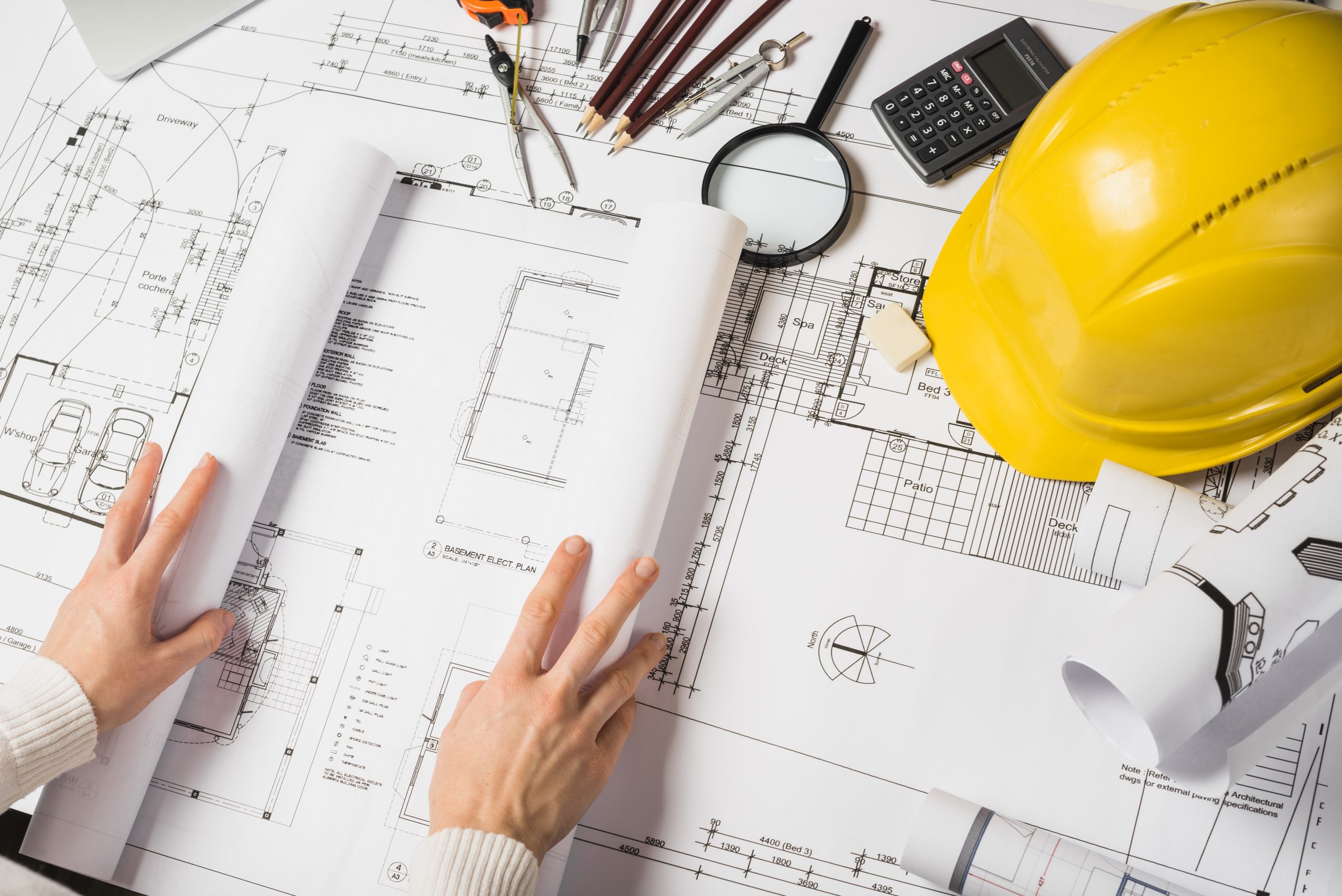Understanding the Diverse Job Paths Available for Aspiring Architect
As a hopeful Architect, you have a globe of occupation courses awaiting you. Each path uses distinct obstacles and opportunities to apply your creative thinking and technical know-how. Whether you're drawn to conventional style or the subtleties of lasting style, there's a niche that lines up with your rate of interests. Recognizing these diverse choices can form your professional journey, yet which direction will you choose to explore initially?
Standard Design: Designing Structures and buildings
Standard design concentrates on developing structures and structures that blend performance with aesthetic allure. Your layouts can show cultural heritage, showcasing local traditions while fulfilling modern-day requirements.
You'll develop abilities in preparing, model-making, and website evaluation, permitting you to envision and connect your concepts effectively. Involving with clients, you'll require to comprehend their vision and equate it into feasible designs.
Moreover, building codes and sustainability practices are essential in your work, guaranteeing your structures are ecologically friendly and safe. As you expand in your job, you'll locate possibilities in household, commercial, or perhaps restoration projects, each offering one-of-a-kind challenges. Welcoming conventional design leads the way for a meeting occupation that pays tribute to the past while shaping the future.
Urban Preparation: Forming Areas and Public Spaces
As an ambitious Architect, you can play an essential function as a city organizer, changing exactly how areas function and engage. By using neighborhood involvement methods, you'll ensure that residents have a voice fit their environment. And also, integrating lasting layout concepts will certainly aid produce areas that not only meet today's requirements however also secure the future.
Role of Urban Planners
While several may think of architects as the single visionaries behind buildings, urban coordinators play a vital role in forming the broader landscape of areas and public spaces. By working together with various stakeholders, you'll assist create parks, transport systems, and household areas that promote social interaction and availability. Your know-how in spatial design and community characteristics allows you to visualize future growth while maintaining cultural heritage.
Community Engagement Approaches
Reliable neighborhood involvement strategies are crucial for metropolitan coordinators to assure that the voices of locals are heard and valued in the preparation procedure. To promote purposeful discussion, you need to focus on open online forums and workshops where neighborhood members can express their concepts and issues. Usage studies and social media sites to reach a broader audience, guaranteeing diverse viewpoints are included. Teaming up with regional organizations can boost trust fund and assist in deeper connections. It's crucial to provide clear details concerning decision-making procedures and suggested tasks, enabling locals to feel enlightened and equipped. By proactively listening and incorporating responses, you'll create rooms that mirror the area's needs, ultimately resulting in even more sustainable and effective urban settings. Embrace openness and continuous dialogue for long-term impact.
Lasting Layout Concepts
When designing city spaces, including lasting style concepts is essential for producing environments that prosper both ecologically and socially. You ought to begin by concentrating on power performance, using products that decrease waste and promote recycling. Think about integrating green spaces, like parks and gardens, to enhance biodiversity and improve air quality. Advertising walkability and public transport can lessen dependence on vehicles, fostering a healthier neighborhood.
Designing with water preservation in mind is additionally essential-- believe about rainfall yards and absorptive surfaces to manage stormwater. Including neighborhood participants throughout the planning process assurances that the rooms you develop satisfy their requirements and motivate social interaction. By accepting these principles, you'll add to vivid, sustainable metropolitan landscapes that benefit everybody.

Landscape Architecture: Creating Lasting Outside Atmospheres
As you explore landscape style, you'll uncover important design concepts that produce functional and stunning outside areas. Lasting methods play a vital function in making sure these atmospheres thrive while reducing ecological impact. And also, you'll find a variety of career opportunities that allow you to make an actual distinction in how individuals engage with nature.
Style Principles in Landscape
Comprehending style principles in landscape design is vital for creating sustainable outside settings that balance with nature. You'll require to ponder aspects like range, percentage, and equilibrium to guarantee your styles really feel cohesive and inviting. Integrating indigenous plants not just improves biodiversity yet likewise lowers water usage, making your landscape resistant. Think of the circulation of room and just how individuals engage with it; pathways and seating areas must welcome expedition and leisure. Furthermore, take note of seasonal changes, making with materials that enhance the environments year-round (Architect). By focusing on sustainability and aesthetics, you can create exterior spaces that enrich the neighborhood and promote health. Embracing these concepts will certainly set a strong foundation for your occupation in landscape architecture.
Lasting Practices Overview
Lasting practices in landscape architecture not just concentrate on aesthetics yet also focus on environmental wellness and resource preservation. By incorporating native plants, you boost biodiversity and reduce the demand for chemical plant foods and pesticides. Executing effective irrigation systems assists preserve water and minimizes runoff, securing neighboring ecosystems. You can make rooms that advertise dirt wellness, such as exercising and utilizing natural products permaculture principles. Additionally, integrating environment-friendly infrastructure, like rain gardens and porous pavements, help in stormwater administration and minimizes urban heat. When you develop outdoor atmospheres with sustainability in mind, you contribute to a healthier earth and supply spaces that promote neighborhood connection. Inevitably, these methods guarantee your designs benefit both individuals and the atmosphere for several years to find.
Career Opportunities Expedition
With a strong foundation in lasting practices, landscape architecture uses a variety of occupation paths that enable you to make a significant impact on the atmosphere. Urban planners frequently team up with landscape architects to create environment-friendly spaces in metropolitan settings, enhancing city livability. If you're passionate concerning education, think about becoming a landscape style teacher, inspiring future generations.
Sustainable Style: Concentrating On Eco-Friendly Practices
As you discover your job in style, accepting environment-friendly techniques can set you apart in a competitive area. Sustainable design concentrates on producing structures that minimize ecological impact while boosting resident wellness. By including renewable materials, energy-efficient systems, and sustainable building strategies, you'll contribute to a greener future.
Begin by getting knowledge of click over here eco-friendly accreditations like LEED or BREEAM, which can bolster your credentials. Take into consideration exactly how natural light, air flow, and thermal performance can enhance style. Team up with engineers and environmental consultants to introduce services that lower waste and preserve sources.
Don't forget the significance of neighborhood participation-- interesting local stakeholders can inspire layouts that harmonize with the atmosphere. As customers increasingly prioritize sustainability, your expertise in environment-friendly methods will not just bring in tasks yet additionally fulfill your passion for accountable design. Accept this important aspect of the occupation, and view your career thrive.
Historical Preservation: Shielding and Recovering Cultural Heritage
While you begin on your architectural journey, consider the crucial duty of historic preservation in browse around this site keeping our cultural heritage. This field concentrates on the security and reconstruction of substantial buildings, sites, and structures that inform the tales of our past. By involving in historic conservation, you'll assist secure the architectural heritage that shapes community identification.
As a historical conservation Architect, you'll evaluate historic value and examine the problem of structures. You'll work very closely with preservationists and chroniclers to guarantee genuine remediation strategies are used. This occupation path permits you to blend imagination with research, allowing you to develop services that respect original materials and workmanship.
Your job not only adds to sustainability by recycling existing structures but additionally promotes a sense of pride within communities. Welcoming this course will certainly assist you come to be a guardian of history, maintaining the stories and visual appeals that enhance our lives.
Inside Style: Enhancing Indoor Spaces
Historical preservation and indoor style both share a dedication to enhancing the built environment, but they concentrate on different elements. While historical conservation emphasizes maintaining a framework's historic and cultural value, indoor architecture absolutely nos in on maximizing interior areas for performance and looks.
As an ambitious Architect, you'll find that indoor design allows you to blend creative thinking with technical skills. You'll design rooms that not only look great but additionally advertise comfort and efficiency. This area includes recognizing just how light, shade, and materials connect within a space, impacting mood and use.
You'll deal with numerous projects, from Your Domain Name property homes to business workplaces, guaranteeing that each setting meets the requirements of its occupants. By prioritizing individual experience, you can transform insides right into useful and motivating spaces, making a substantial impact on exactly how people interact with their environments. Welcome the chance to enhance interior settings and shape the means people live and function.
Industrial Style: Merging Functionality With Looks
Industrial design plays a crucial role in producing products that perfectly blend aesthetic appeals with functionality, ensuring that what you make use of daily is not only aesthetically attractive yet also sensible. As an ambitious Architect, you can engage on your own in this area, focusing on making whatever from furniture to consumer electronics. Your job involves comprehending individual needs, products, and making procedures, enabling you to develop cutting-edge solutions that enhance daily experiences.
In commercial style, you'll frequently collaborate with engineers, marketing professionals, and producers, making sure that your layouts are not just lovely but also viable. You'll learn to balance type and feature, focusing on usability without compromising style. By sharpening your skills in laying out, 3D modeling, and prototyping, you'll be well-appointed to bring your concepts to life. This career course offers a vibrant atmosphere where creativity satisfies practicality, making it a rewarding selection for engineers thinking about forming the items of tomorrow.
Regularly Asked Questions
What Educational Certifications Do I Required to Become an Engineer?
To become an architect, you'll require a specialist level in design, generally a Bachelor's or Master's. Additionally, you'll need to complete a teaching fellowship and pass the Architect Enrollment Assessment to exercise legitimately.
Exist Accreditation Needs for Different Building Occupation Paths?
Yes, there're qualification demands for different building courses. Architect. You'll need to pass tests, total teaching fellowships, and in some cases seek specialized training, depending on your picked emphasis, like landscape design, metropolitan layout, or historical preservation
What Software Skills Are Important for Engineers Today?

How Can I Gain Practical Experience While Studying Architecture?
You can get sensible experience by interning at building firms, joining layout competitions, offering for neighborhood tasks, or teaming up with classmates on real-world projects. These opportunities enhance your abilities and construct important links in the sector.
What Job Opportunities Exist Outside Traditional Architecture Firms?
You can explore various work possibilities outside typical style firms, like urban preparation, interior decoration, landscape design, construction management, property growth, or also duties in sustainability consulting. Each deals special challenges and rewards.
Whether you're attracted to traditional architecture or the nuances of sustainable layout, there's a particular niche that aligns with your interests.When designing city areas, including lasting style concepts is important for creating environments that prosper both environmentally and socially.As you discover landscape style, you'll discover important style principles that create attractive and practical outdoor spaces.Comprehending layout concepts in landscape style is necessary for creating sustainable outside settings that integrate with nature.In industrial style, you'll often work together with designers, marketing professionals, and producers, making certain that your styles are not only gorgeous but also feasible.